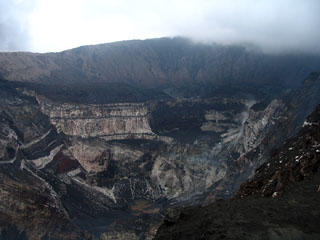Report on Ambrym (Vanuatu) — 9 October-15 October 2019
Smithsonian Institution / US Geological Survey
Weekly Volcanic Activity Report, 9 October-15 October 2019
Managing Editor: Sally Sennert.
Please cite this report as:
Global Volcanism Program, 2019. Report on Ambrym (Vanuatu) (Sennert, S, ed.). Weekly Volcanic Activity Report, 9 October-15 October 2019. Smithsonian Institution and US Geological Survey.
Ambrym
Vanuatu
16.25°S, 168.12°E; summit elev. 1334 m
All times are local (unless otherwise noted)
Vanuatu Meteorology and Geo-Hazards Department (VMGD) reported that data and observations during February-October indicated that conditions at Ambrym had become stable after the eruption in December 2018 that focused on the summit caldera and East Rift Zone. On 10 October the Alert Level was lowered to 1 (on a scale of 0-5) indicating minor unrest. VMGD warned the public to stay outside of the Permanent Danger Zone defined as a 1-km radius from Benbow Crater and a 2-km radius from Marum Crater, and additionally to stay away from the ground cracks resulting from the December 2019 eruption (a 500-m-radius around the major cracks at Paamal village).
Geological Summary. Ambrym is a large basaltic volcano with a 12-km-wide caldera formed during a major Plinian eruption with dacitic pyroclastic flows about 1,900 years ago. A thick, almost exclusively pyroclastic sequence, initially dacitic then basaltic, overlies lava flows of a pre-caldera shield volcano. Post-caldera eruptions, primarily from Marum and Benbow cones, have partially filled the caldera floor and produced lava flows that ponded on the floor or overflowed through gaps in the caldera rim. Post-caldera eruptions have also formed a series of scoria cones and maars along a fissure system oriented ENE-WSW. Eruptions have been frequently reported since 1774, though mostly limited to extra-caldera eruptions that would have affected local populations. Since 1950 observations of eruptive activity from cones within the caldera or from flank vents have occurred almost yearly.
Source: Vanuatu Meteorology and Geohazards Department (VMGD)

